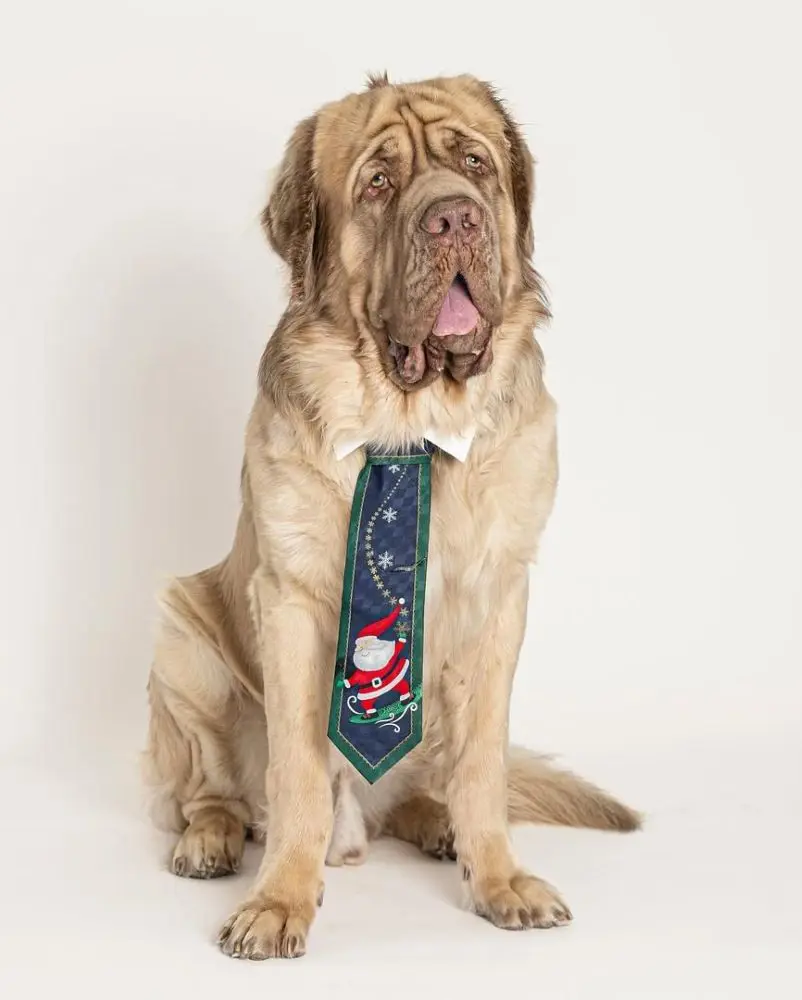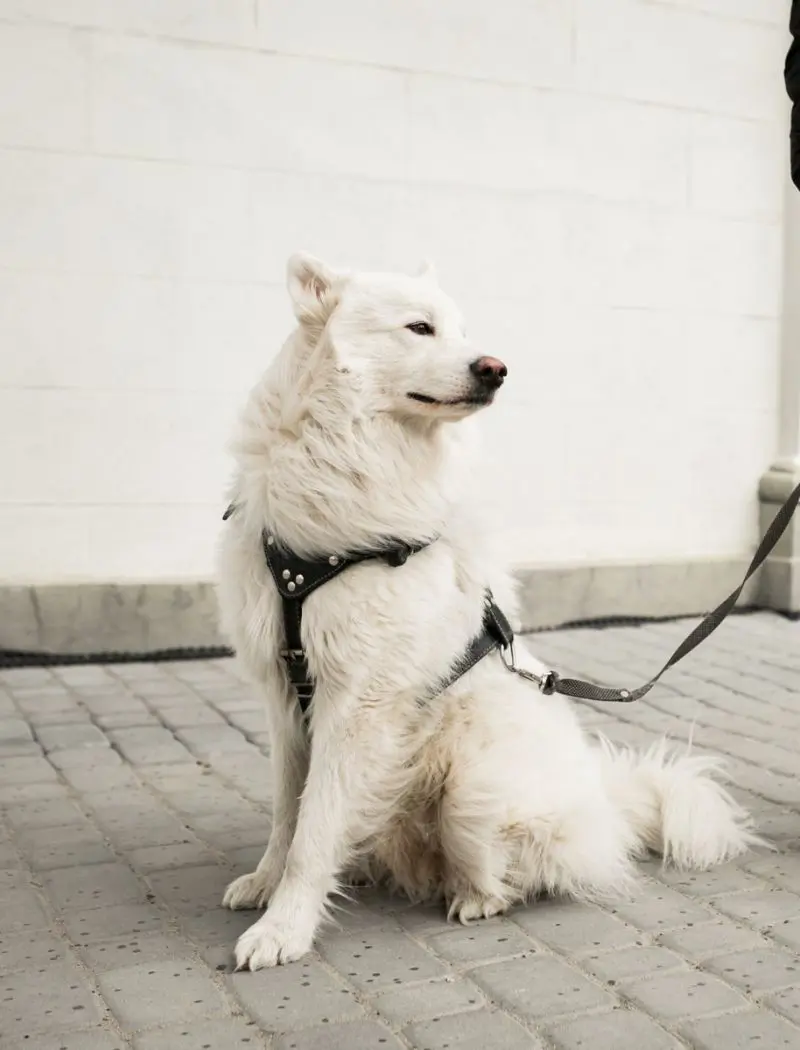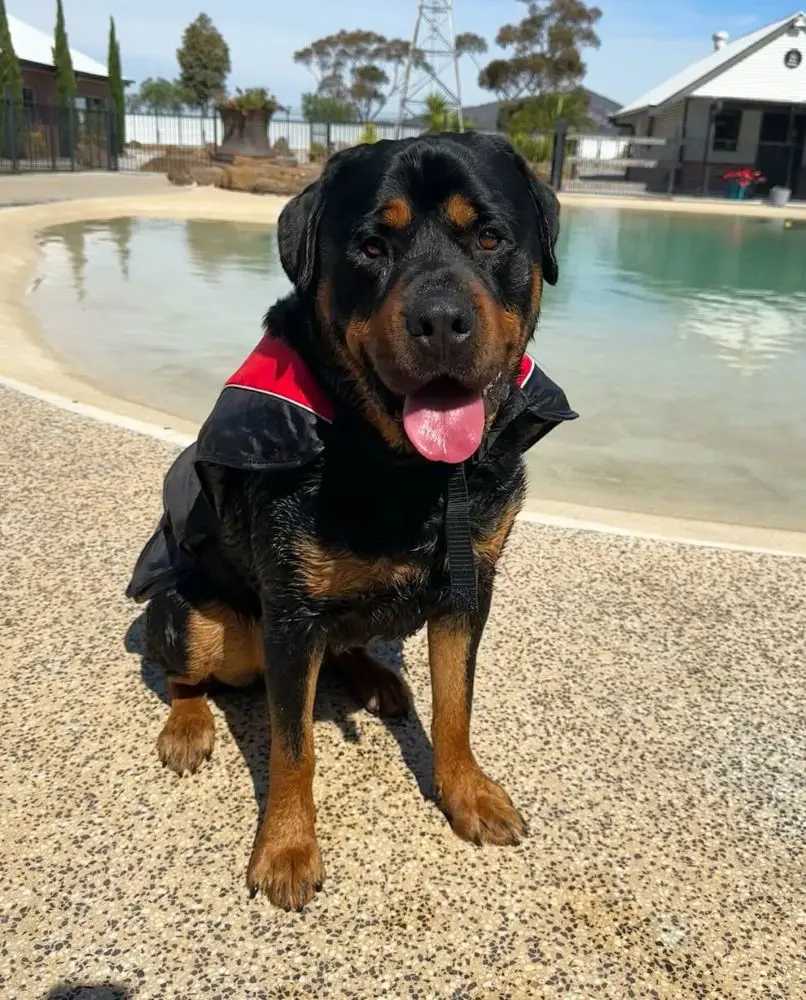20 Ways To Keep Your Dog Warm
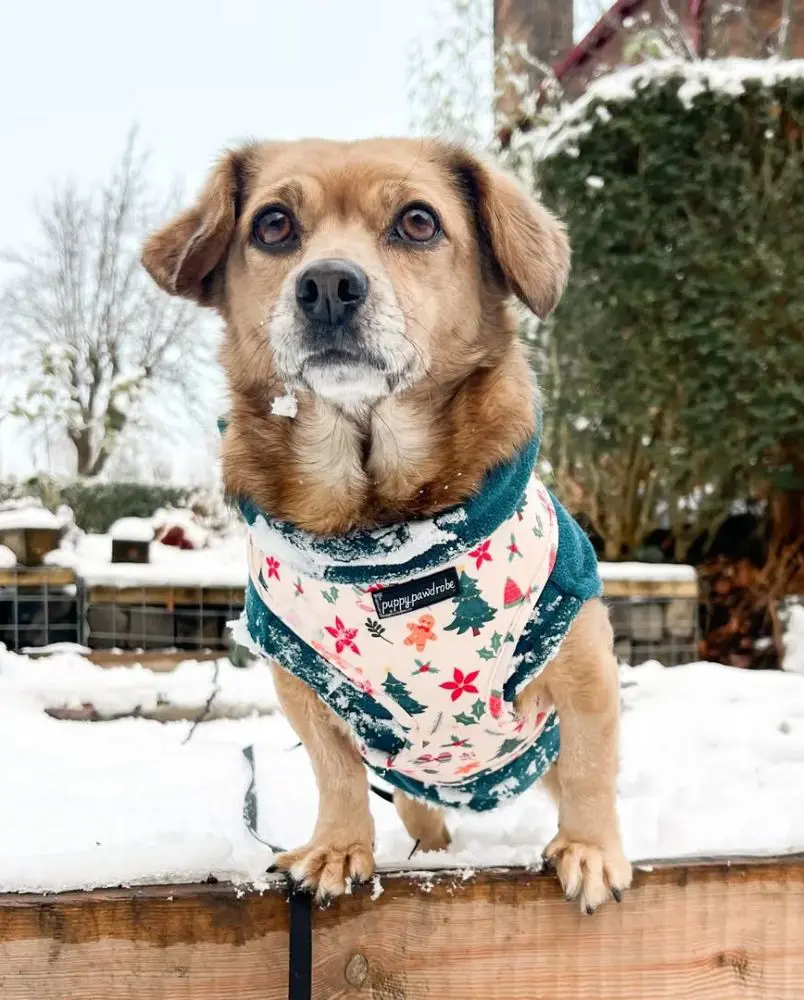
Unless you own a breed with extreme resistance to cold, dogs are not particularly fond of winter or living in subzero temperatures. While their fur can provide insulation to a degree, dogs have several vulnerable spots that tend to develop frostbite during colder days.
With the arrival of the snowiest and coldest month in the US, pet owners are looking for ways to keep their dogs warm without spending too much on heating. These 20 methods will help you beat the cold, not just in winter but also during colder days throughout the year.
How to Keep Your Dog Warm During Winter?
1. Use Dog Sweaters or Jackets
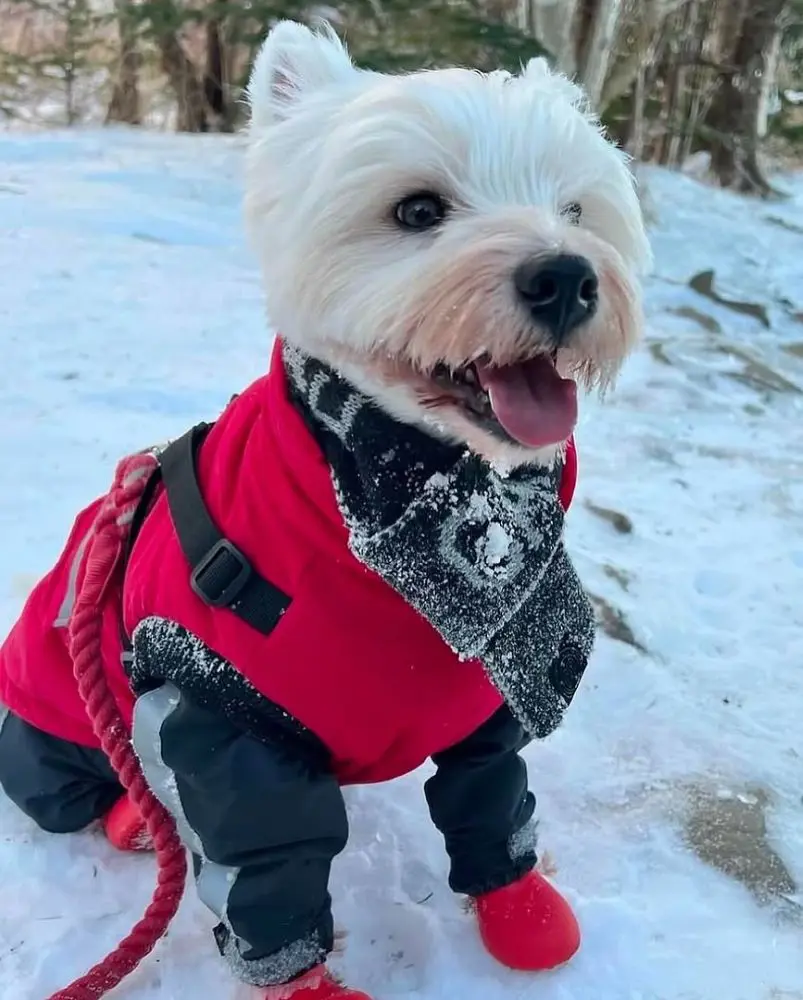
The fur on a dog's body is not always enough to maintain its heat requirement. Smaller breeds tend to lose their body heat faster than larger dogs, increasing the need for sweaters or jackets when the thermometer hits subzero temperatures.
Even when warm clothing may not be significantly necessary, there's no harm in providing a layer of insulation or extra warmth to your pet. Depending on the breed of the dog, the need for a warm jacket may differ by the change in temperature.
For instance, dogs with the least tolerance to cold weather, including Chihuahuas, Basenjis, and Bulldogs, will need a sweater even if the temperature is far from freezing. On the other hand, breeds like Huskies and Newfoundlands can live in extremely cold weather without lowering their body temperatures.
2. Close Off Drafty Areas
If your dog is shivering, despite proper clothing and heating, a faulty door or window could be responsible for letting the breeze indoors. Drafts from open doors or windows can quickly lower the temperature in a room, making it difficult for your dog to stay warm, especially if they have a short coat or are sensitive to cold.
Even a slight drop in temperature can cause hypothermia in smaller or older dogs, as their bodies struggle to regulate heat. By sealing gaps, you prevent cold air from entering and reduce heat loss.
Additionally, closed doors and windows help retain heat generated by heaters or other warming devices. This creates a consistent environment where your dog can relax without the stress of sudden cold drafts.
3. Provide Indoor Exercise
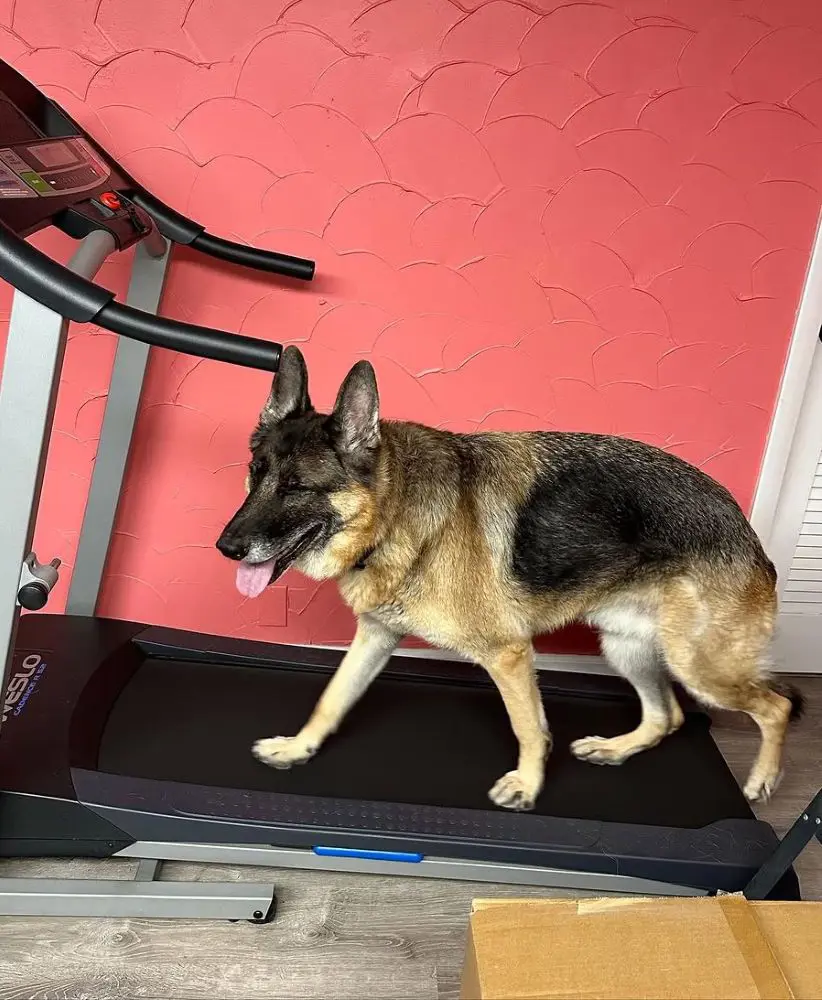
Another effective way to beat the cold is to replace the dog's daily exercises with indoor sessions, particularly in regions with the most snow. As many furless parts of the dog can get exposed to the snow, causing frostbite, it's best to exercise your dog indoors until the coldest period has passed.
Owning a treadmill can come in handy during these situations, as the equipment offers a proper platform for the canine to run, eventually raising their body temperatures. Besides a treadmill, dog owners can also plan play sessions that physically engage the dog, including indoor fetch and tug-of-war along with several indoor agility courses.
4. Use Warm Towels After Walks
If your pet gets exposed to snow, it can take a long time to retain a warm body temperature even after getting indoors. Snow and slush can cling to your dog’s fur, paws, and underbelly, causing them to feel chilled for hours. By using a warm towel, you remove this moisture while also helping them regain warmth.
Similarly, wet fur can aid the cold, while prolonged dampness increases the risk of hypothermia, especially in small, short-haired, or elderly dogs. A thorough drying session prevents this and allows your dog to stay cozy and safe.
5. Adjust Grooming Habits
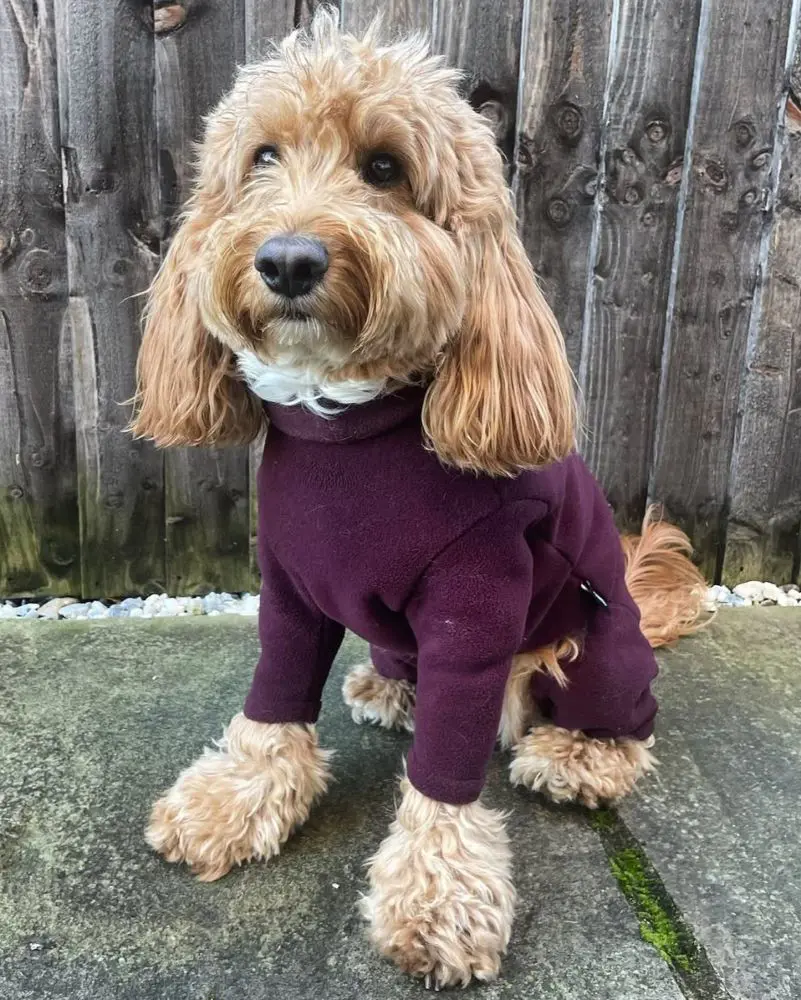
Postpone any major grooming sessions during winter; shaving the fur can leave the canine extremely vulnerable to environmental conditions. A minor blizzard or snowing can significantly drop the dog's body temperature, without the insulation provided by their fur.
While minor haircuts are acceptable, experts don't recommend full-shaving of the dog's body, unless it's a medical necessity. Delay any major grooming plans for spring when the temperature starts to rise.
How To Keep Dogs Warm Outside
6. Add Heated Bed

Using a warm bed, especially a heated bed, is a foolproof way to keep dogs warm outdoors; these beds are particularly beneficial for dogs with thin coats, joint pain, or older dogs needing extra warmth. However, they must be placed in a sheltered, insulated area to maintain effectiveness and safety.
Electric heated beds, made of good-quality materials, can last several years with proper care, but frequent exposure to harsh outdoor conditions may reduce their durability. Similarly, these equipment are designed with safety features, such as low-voltage systems and chew-resistant cords, to minimize the risk of shocks.
Although some models are water-resistant, not all are fully waterproof. Check if the bed is labeled as waterproof for outdoor use to prevent damage from moisture and maximize safety.
7. Provide A Weatherproof Shelter
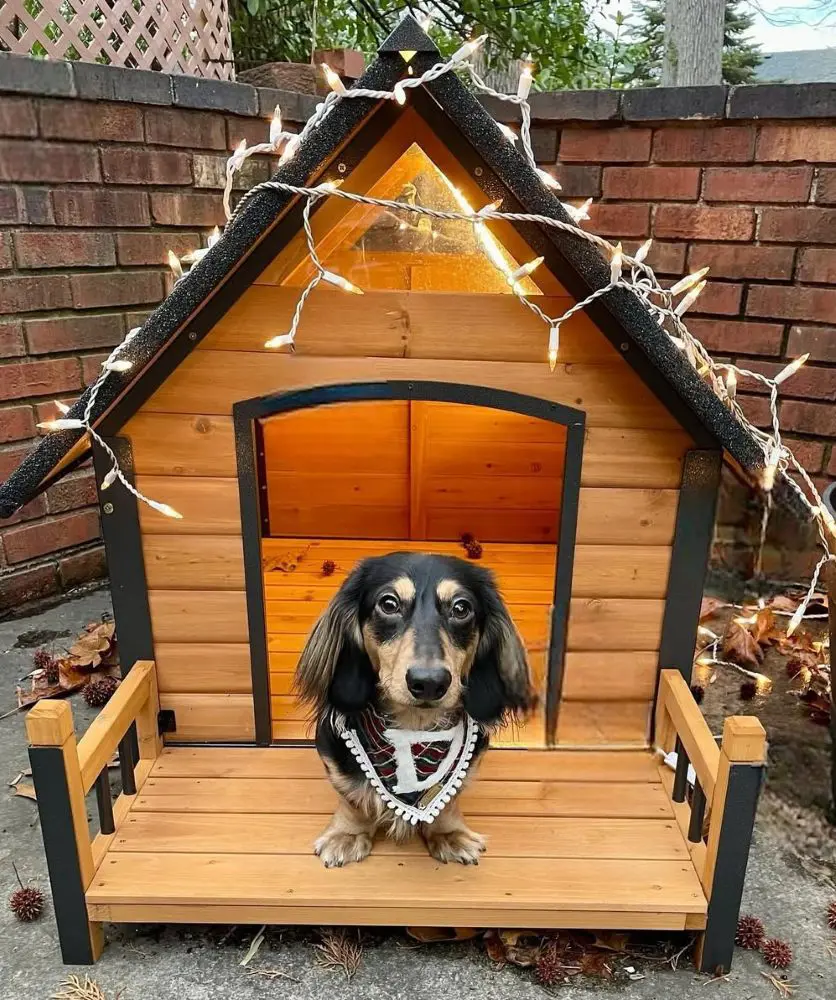
A well-insulated shelter protects a dog from rain, snow, and damp conditions, along with the freezing weather of winter. Canines, that spend a significant time outdoors, can suffer from hypothermia or other cold-related illnesses. To counter the weather conditions, offer a waterproof shelter that can keep your beloved pet dry and safe.
In addition to keeping your dog dry, a waterproof shelter shields them from wind and drafts, which can amplify the cold. Dogs with short coats or low body fat are particularly vulnerable, but even hardy breeds can suffer without adequate protection.
Moreover, damp environments encourage the growth of mold and bacteria, harming your dog’s skin and respiratory health. A dry refuge can help prevent these issues while also keeping the dog comfortable.
8. Create a Door Flap for the Doghouse
While your pet may not be smart enough to open and close doors, getting a door flap for the doghouse can help the dog move easily without letting the cold air in. Unlike doors, flaps are simpler to use, requiring the dog to only push it to get indoors or outdoors.
The flap acts as a barrier, preventing cold drafts, snow, and rain from entering the doghouse. Without a door flap, heat escapes easily, especially during windy or snowy conditions. In addition to providing insulation, a door flap blocks out moisture and debris; this prevents the interior from becoming damp.
9. Elevate the Doghouse
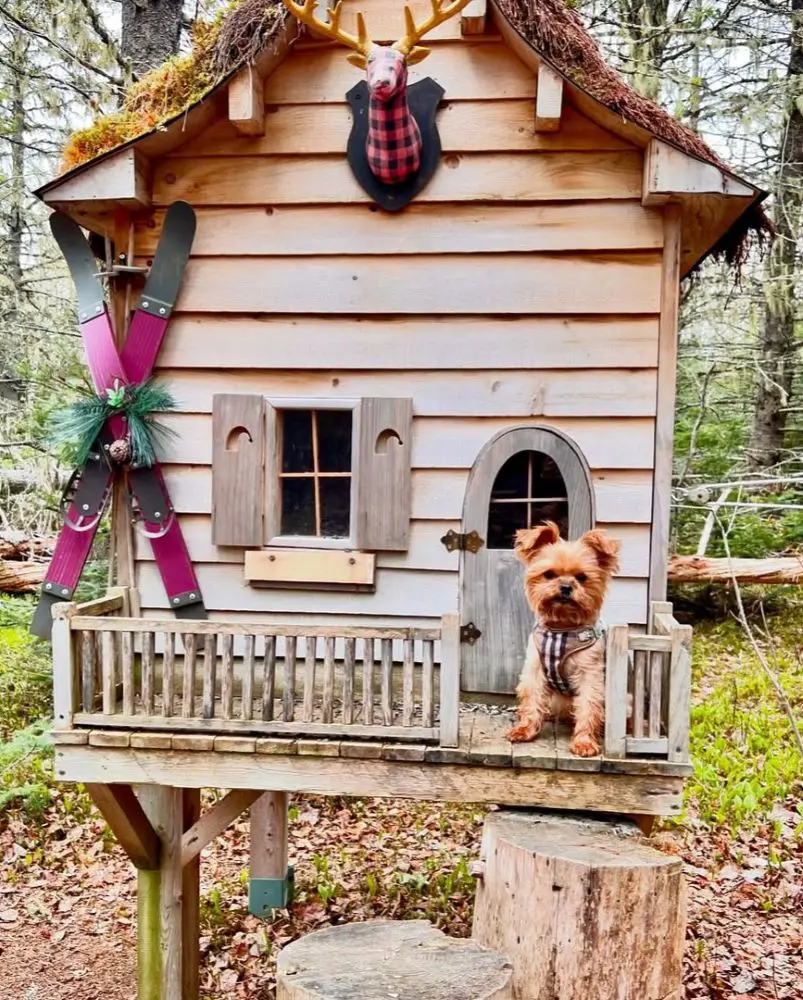
Elevating an outdoor doghouse can keep the cold out, as it prevents direct contact with the ground. When a doghouse sits on the ground, the interior tends to become damp and chilly as it absorbs moisture and cold from the soil. Raising the lower level creates an insulating air gap that reduces heat loss.
For effective insulation, the doghouse should be elevated at least 4 to 6 inches off the ground. This height is necessary to provide enough airflow underneath to prevent moisture buildup and block the transfer of cold from the ground, while also reducing the risk of flooding in rainy or snowy conditions.
Elevating the doghouse is pretty straightforward as it only requires wooden pallets, concrete blocks, or bricks. These materials are sturdy and durable for outdoor use.
10. Use Reflective Insulation
This insulation method uses a reflective material to reflect heat back into a space, rather than absorbing it. It typically consists of a layer of aluminum foil or similar reflective material, which is backed by foam or another insulating layer. When used in an outdoor doghouse, reflective insulation helps retain your dog’s body heat by reflecting it toward the dog.
This type of insulation is particularly useful in cold weather because it minimizes heat loss. Instead of letting the heat escape through the walls and roof, reflective insulation traps warmth, helping to maintain a comfortable temperature inside the doghouse.
Lightweight and easy to install, reflective insulation makes for an affordable and effective option for pet owners looking to keep their dogs warm outdoors. It can be used in combination with other materials like straw or blankets for added comfort.
How To Keep Dogs Warm At Night?
11. Offer a Self-Warming Dog Bed

Nights can get particularly cold, especially in winter. While humans have their thick blankets and air-conditioning to protect them, a dog may not enjoy the same luxury. Get a self-warming dog bed for your pet to escape chilly nights.
These beds typically feature a layer of reflective fabric, such as Mylar or other heat-retentive materials, for absorbing and radiating a dog’s natural body heat. One distinct advantage of using a self-warming bed over a heated bed is that the former doesn't require electricity.
While the bed doesn't generate heat on its own, it amplifies the heat your dog produces. Self-warming beds are often soft, and provide comfort. while keeping your dog insulated from the cold surfaces underneath.
12. Use Heated Blankets or Pads
Manufactured using durable and flexible materials, heated blanked and pads contain an internal heating element, usually made of low-voltage wires or carbon fiber. Some of these products are even designed with thermostats to regulate the temperature and prevent overheating.
Depending on te brand, size, and features, a heated blanket or pad can cost anywhere between $30 to $100. Similarly, high-quality models with advanced safety features, such as chew-resistant cords and automatic shut-off, tend to be on the higher end of the price spectrum.
With proper handling, heated dog blankets can last several years. However, the pet owner should be responsible for a regular inspection to check the presence of damage to cords or fabric.
13. Place a Hot Water Bottle

Using a hot water bottle wrapped in a towel is a simple and effective way to keep your dog warm, especially in cold weather or during power outages. The hot water bottle serves as a portable heat source, radiating gentle warmth to help your dog stay cozy and comfortable.
To use it safely, fill the bottle with warm water - never boiling, as this could cause burns. Check whether the bottle’s cap is tightly sealed or not as it can cause leaks. Next, wrap the bottle in a thick towel to regulate the heat and avoid direct contact with your dog’s skin.
The warmth from a hot water bottle typically lasts 2 to 6 hours, depending on the bottle's size and insulation. To maintain consistent warmth, you can refill the bottle as needed.
14. Keep the Room Warm
Dogs are more susceptible to the cold while resting, as their activity levels drop and their body temperature can decrease. To avoid prolonged exposure, consider using a safe space heater with pet-friendly features like automatic shut-off.
At the same time, place the dog’s bed in a draft-free area, away from doors or windows, to minimize cold air exposure. Adding layers of blankets or using a self-warming bed further enhances warmth.
15. Cuddle with Your Dog
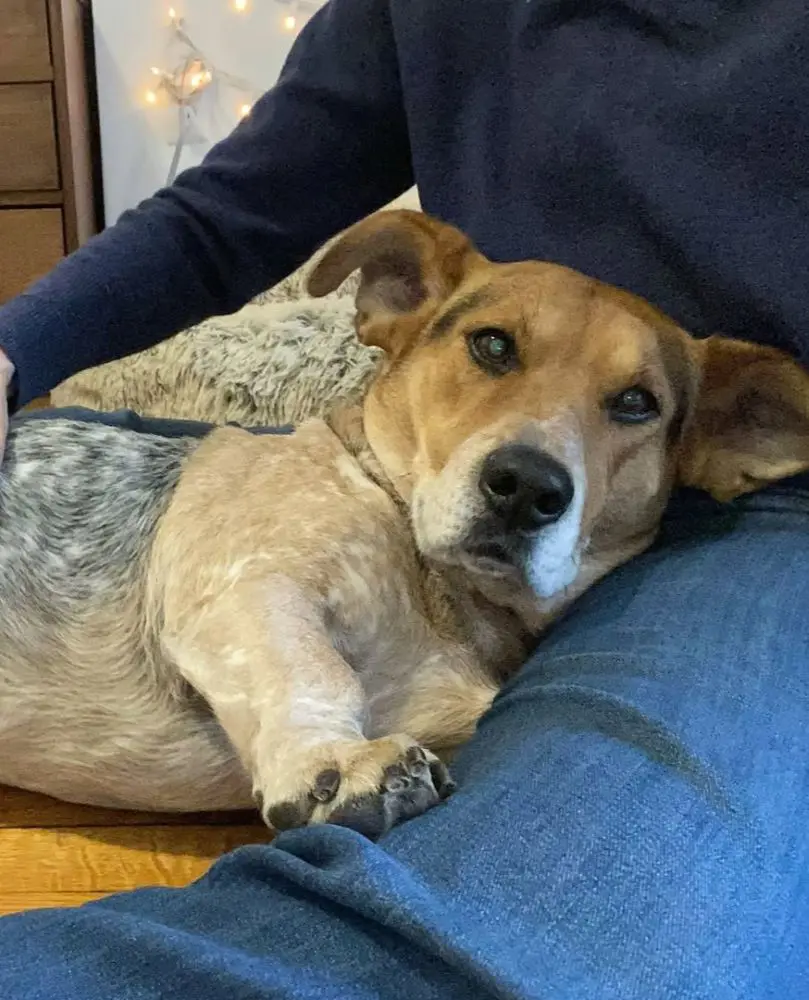
Unless you have a "no dog on bed" rule, cuddling with your beloved companion should be nothing new. Cuddling doesn't just help strengthen the bond between you and the dog, it also keeps both the owner and pet warm during cold nights.
As you and your companion cuddle each other, the action keeps the heat trapped inside of your body, without any spots for the heat to leave. As dogs usually have a higher body temperature than humans, around 99.5-102.5° Fahrenheit, pet parents benefit more from this act as they can gain heat transferred from the canine's body.
How To Keep Dogs Warm Without Power?
16. Use Mylar Blankets
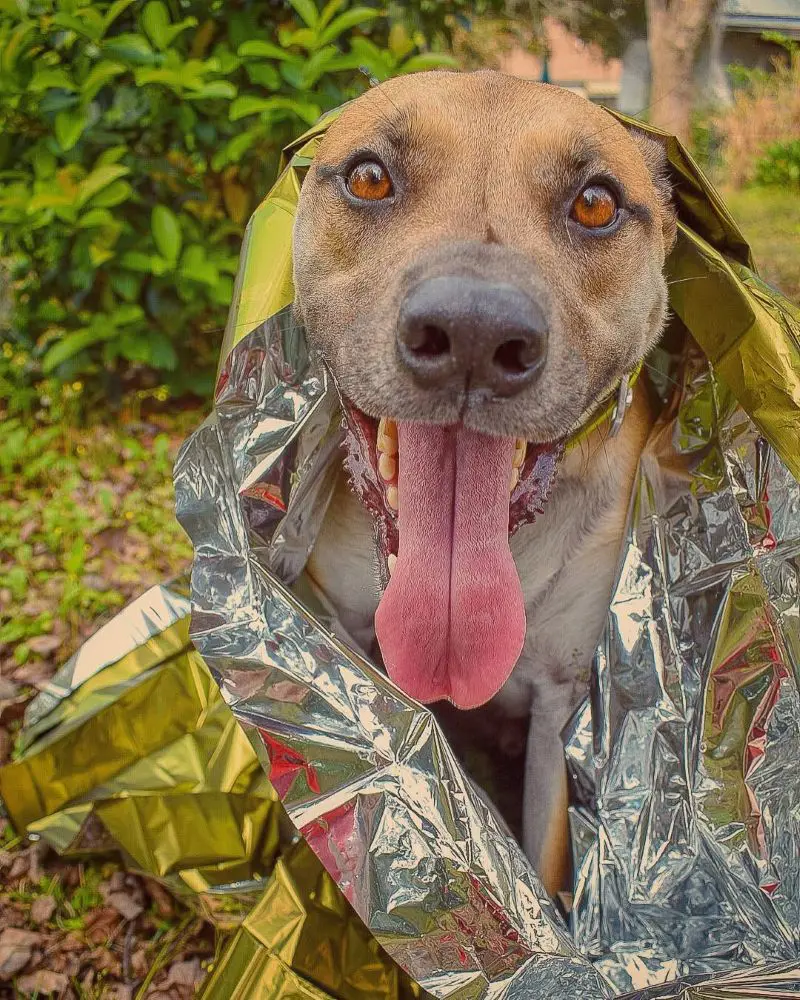
Also known as an emergency or space blanket, a mylar blanket is a heat-reflective sheet made from a thin layer of polyester film coated with aluminum. Originally developed by NASA, its reflective properties make it highly effective at retaining heat by reflecting body warmth back toward the source.
During power outages, Mylar blankets can help keep dogs warm by preventing heat loss. Placing the blanket over your dog’s bed or lining their sleeping area creates an insulated space that retains warmth even in cold conditions.
However, dogs may not always enjoy Mylar blankets due to their crinkly texture and noise, which can be unsettling for some pets. To address this, you can use the Mylar blanket as a layer beneath or over a softer fabric.
17. Make a DIY Heated Rice Sock
A DIY heated rice sock isn't just effective in beating the cold, it is also extremely easy to prepare. Simply, fill a clean sock with uncooked rice, leaving enough room to tie or sew the open end securely.
Next, heat the sock in the microwave for about 1-2 minutes, depending on its size; the rice should be evenly warmed but not too hot to the touch. While it doesn’t offer extended heating, lasting only around 30 minutes, you can reheat it as needed to maintain warmth.
18. Use a Tent or Canopy Indoors
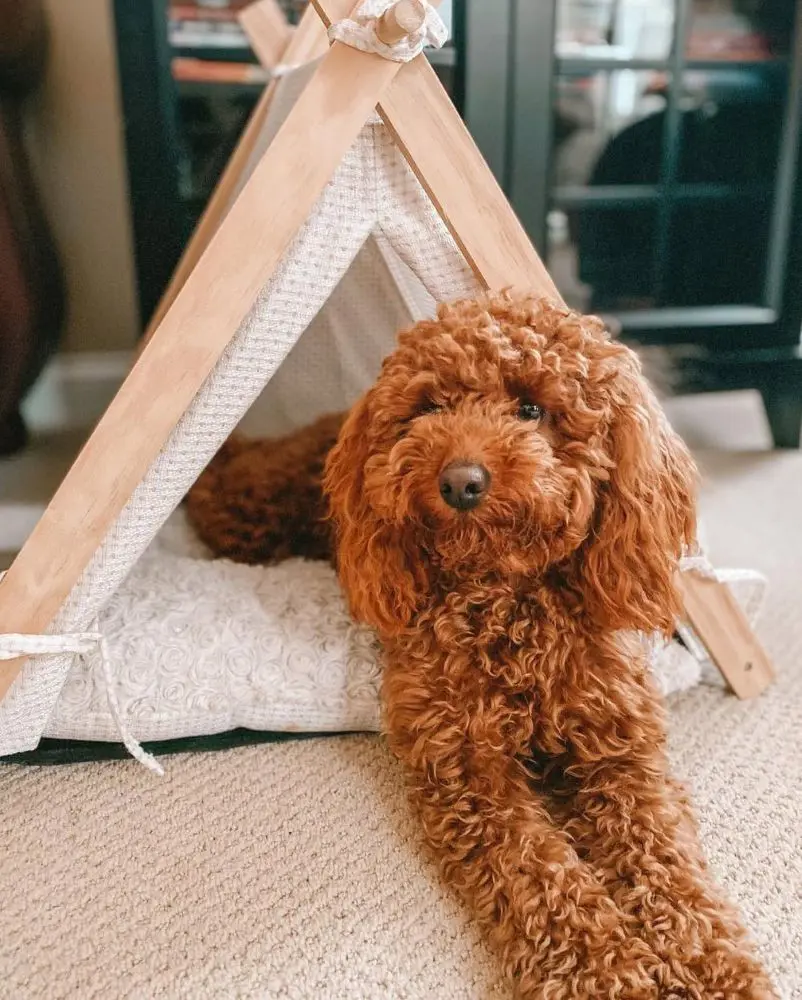
In addition to power outages, an indoor tent can be used at any time. As the dog is already inside an insulated room when indoors, adding a canopy can provide extra warmth that can come in handy when the power is out.
Similarly, using a tent also provides a feeling of comfort and personal space to the dog, thus alleviating the stress caused by the cold weather. These products are relatively cheap too, costing only around $30 to $50.
19. Light Safe Candles Nearby
While lighting candles can keep your dog from freezing during power outages in winter, they should only be used as a last resort after making sure that there are no fire hazards nearby. Candles generate heat, which can slightly raise the temperature in a small space. However, their effectiveness is limited, and they should never be the sole heat source for your dog.
To use candles safely, place them in stable, heat-resistant holders and keep them on elevated surfaces, well out of your dog’s reach. Avoid leaving candles unattended, as dogs may accidentally knock them over.
20. Block Drafts
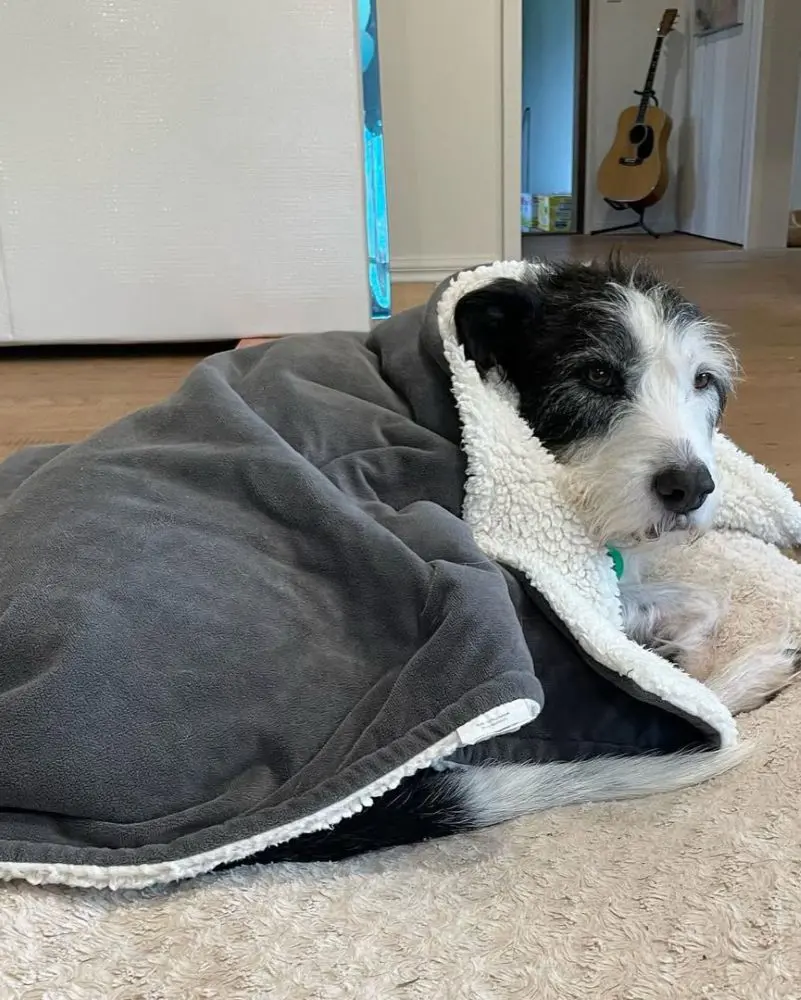
Drafts typically enter through gaps under doors, windows, or poorly insulated walls; they allow cold air to seep in and warm air to escape. By sealing these gaps, you can capture more heat.
Use draft stoppers or rolled towels at the base of doors. Or, you can apply weatherstripping or caulking around windows and door frames to seal any openings.
Similarly, heavy curtains or blankets over windows can also act as an insulating layer. For larger gaps, foam sealants or insulating tape are effective solutions.
Top Lists
